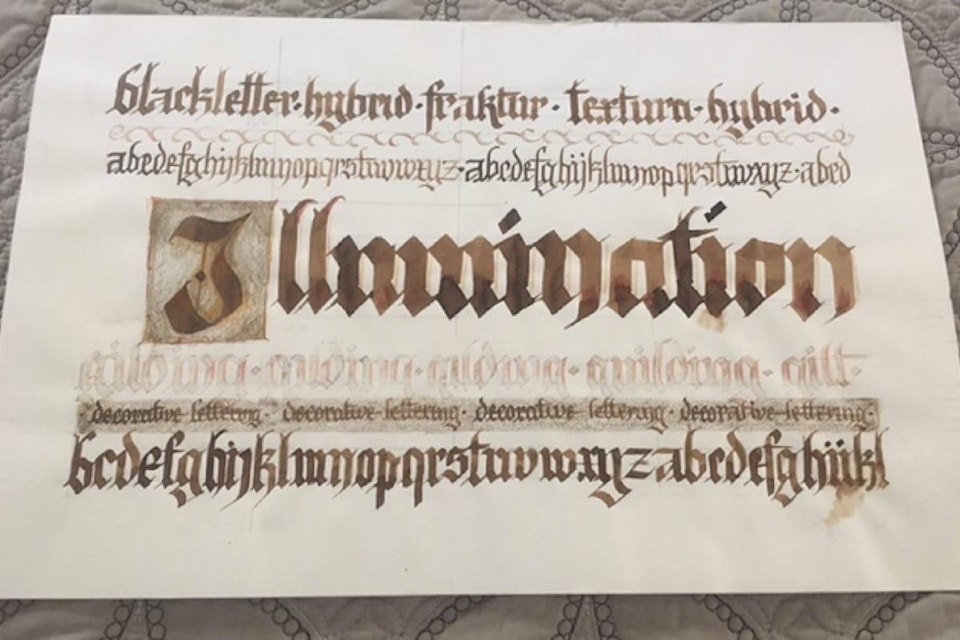Taught the monastic calligraphy tradition as a child in England, Judi Hopewell is still a student of lettering over the centuries, and hopes to help keep it going into the future.
One way she’s doing that is by holding classes at the MAC this Sept. and Oct.
Hopewell, a multimedia artist who started off painting portraits, said her first contact with calligraphy was in England as a little girl.
“I was taught calligraphy by the nuns,” she said.
“I didn’t really enjoy painting bowls of fruit, and so I had to choose: it was either still life or calligraphy, and calligraphy seemed much more interesting to me… And I’ve done it ever since.”
Asked what attracted her to the art back then, and why she still enjoys it, Hopewell broke it down like this.
“Whether it’s modern lettering that you see on the internet, or the medieval stuff, it has a balance and a beauty because it’s done well and it all has to do with rhythm really — a spacing, a height, uniformity. It’s just very appealing to look at.
“Then the next challenge comes from, ‘How can I do that myself?’ You have to work at that with hours and hours of practice.”
After those hours of practice, the act of writing in that tradition can give the writer a zen-like state — a zone that Hopewell said she quite enjoys.
A student of the history of writing and various styles of writing (called hands), Hopewell said she’s done 16 hands, and “been right through the historical gamut.”
“The first letters that were ever done of course were chiseled by the Egyptians and the Romans into rock,” she said, while each advancement in the art made writing easier.
Ironically, it’s that evolution that has led to writing being so easy, you don’t actually have to write anymore — just type, said Hopewell.
“It’s very heartbreaking to me and to all artists, really, that it’s now over 10 years since America stopped teaching handwriting.”
More and more Canadian schools have also been leaving handwriting out of the curriculum over the last several years.
While that means many youth have missed out on an introduction to the cursive and calligraphic art form, Hopewell said studies have shown it also has an impact on information retention.
“If (students) are rattling off (study notes) with their fingers on a keyboard, it’s not retained in the brain the way it is when they have written their school work,” she said.
But the digital age hasn’t done away with calligraphy completely. Websites like Pinterest are getting a new generation interested in the art, said Hopewell.
She’s hoping her classes can help to do the same.
She’ll be teaching lessons on Italic lettering, which is a good beginner form of calligraphy.
Level 1 takes place from Sept. 7 to the 21 with each class running from 1 p.m. to 4 p.m.
Level 2 is Oct. 5-19 from 1 p.m. to 4 p.m. Each lesson is $45 for a three-week session.
For more information, and to register, go to mcmillanartscentre.com/italic-lettering-classes/.
